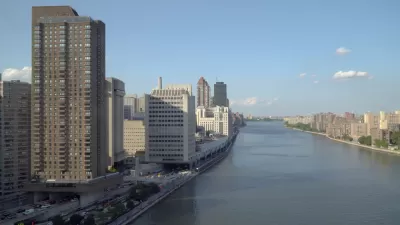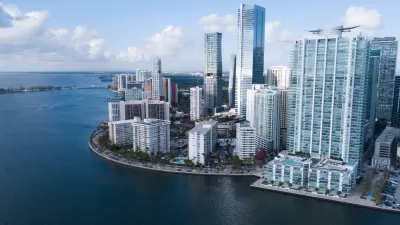New data make it possible to trace outline of COVID-19's footprint on the Big Apple real estate market.

C.J. Hughes shares the latest data on the state of the New York City real estate market during the pandemic year of 2020, saying that the "pandemic's effect on the real-estate market has come into sharp relief" at the beginning of 2021.
To summarize the narrative described by the article. 2020 was grim, but a recovery is already underway.
But first the unavoidable pain of a year that saw the city prohibit apartment showings and construction for extended periods during the year:
There were 7,048 sales of co-ops and condos in Manhattan in 2020, versus 10,048 in 2019, representing a nearly 30 percent drop, according to [brokerage Douglas] Elliman, with co-op and condo sales down about equally.
Prices didn't drop nearly as much as sales, according to the same source, and demand increased for larger homes. "Apartments that sold last year typically measured 1,217 square feet, up from 1,148 in 2019," writes Hughes. Moreover, "the high-end bracket — homes listed for $5 million to $20 million — was the only one to enjoy an increase in values last year, and a large one, of more than 20 percent."
All of those trends together are bad sign for the city's existing socioeconomic divide, notes Hughes.
For signs of recovery, Hughes cites a new report from the firm Brown Harris Stevens, which found evidence of an increasing amount of sales activity in the final quarter of the year. The same report also says that available apartments are taking less time to rent.
FULL STORY: New York Real Estate Begins Its Recovery

Alabama: Trump Terminates Settlements for Black Communities Harmed By Raw Sewage
Trump deemed the landmark civil rights agreement “illegal DEI and environmental justice policy.”

Study: Maui’s Plan to Convert Vacation Rentals to Long-Term Housing Could Cause Nearly $1 Billion Economic Loss
The plan would reduce visitor accommodation by 25% resulting in 1,900 jobs lost.

Why Should We Subsidize Public Transportation?
Many public transit agencies face financial stress due to rising costs, declining fare revenue, and declining subsidies. Transit advocates must provide a strong business case for increasing public transit funding.

Paris Bike Boom Leads to Steep Drop in Air Pollution
The French city’s air quality has improved dramatically in the past 20 years, coinciding with a growth in cycling.

Why Housing Costs More to Build in California Than in Texas
Hard costs like labor and materials combined with ‘soft’ costs such as permitting make building in the San Francisco Bay Area almost three times as costly as in Texas cities.

San Diego County Sees a Rise in Urban Coyotes
San Diego County experiences a rise in urban coyotes, as sightings become prevalent throughout its urban neighbourhoods and surrounding areas.
Urban Design for Planners 1: Software Tools
This six-course series explores essential urban design concepts using open source software and equips planners with the tools they need to participate fully in the urban design process.
Planning for Universal Design
Learn the tools for implementing Universal Design in planning regulations.
Smith Gee Studio
Alamo Area Metropolitan Planning Organization
City of Santa Clarita
Institute for Housing and Urban Development Studies (IHS)
City of Grandview
Harvard GSD Executive Education
Toledo-Lucas County Plan Commissions
Salt Lake City
NYU Wagner Graduate School of Public Service





























